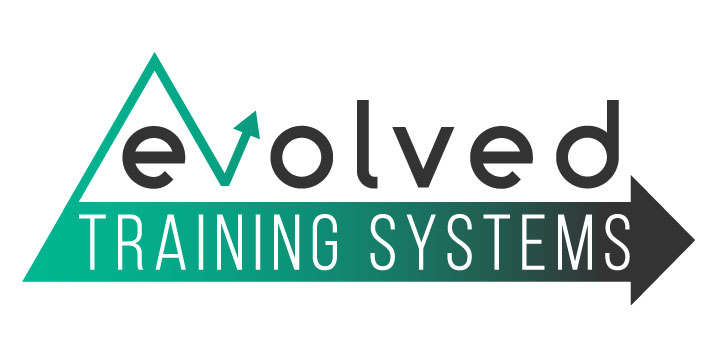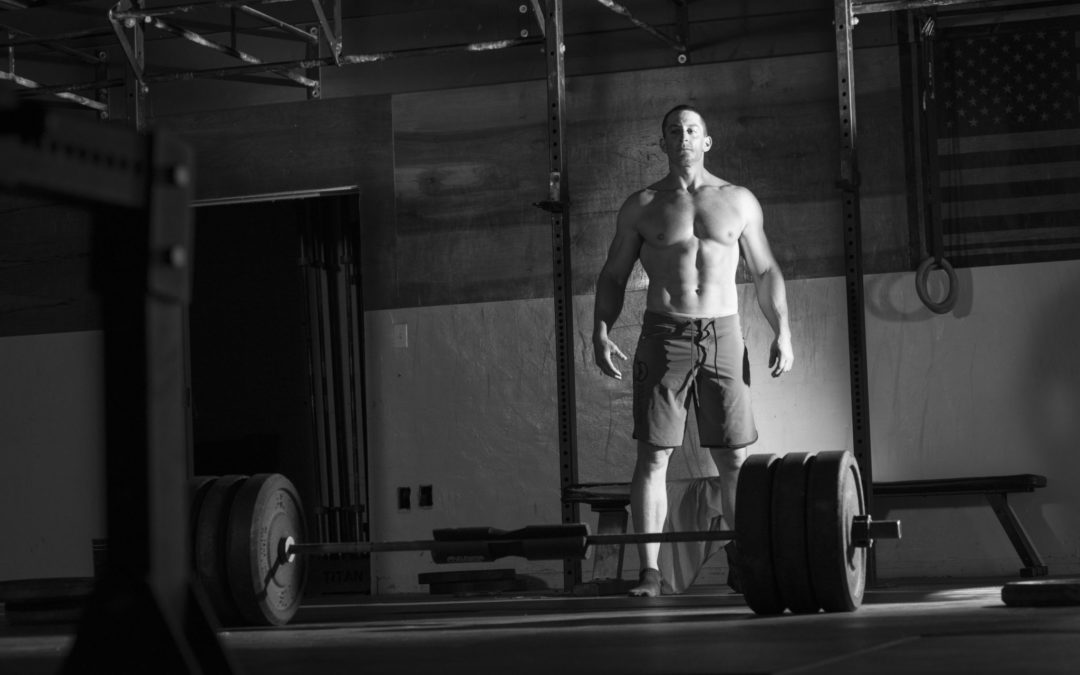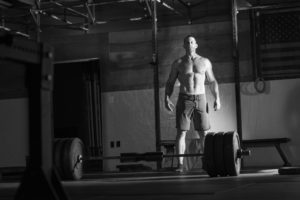Let’s Get Strong!
This 7-week cycle strength cycle is part of the larger periodization model we follow at Evolved throughout the year, where we primarily train in hypertrophy, and then venture into strength and metabolic every 9 months or so.
The main focus of implementing training periodization is to optimize strength and hypertrophy outcomes across the year, without having to sacrifice conditioning levels.
You can think of these phases on a spectrum, with hypertrophy being in the middle (the most well-rounded stimulus). Then strength is just slightly lower reps and longer rest periods. Metabolic is going to be slightly lighter weights with shorter rest periods.
This how it will look for the next 13 weeks:
Strength Pre-cycle Intro/Deload week
6-week Strength Phase
Metabolic Pre-cycle Intro/Deload week
5-week Metabolic Hypertrophy phase
Let’s discuss some of the science that makes this approach so effective and delve into the specific details of this training cycle!
—
The Rationale for Strength Phases:
1. Strength phases provide you an opportunity to assess your progress at a much more tangible level. Yes, we can get stronger and set a “PR” in the 10-15 rep range but being able to say “I set a PR in a 1, 2 or 3-rep max” is something we can hold with us as an emblem of our hard work and dedication. Not to mention, lifting heavy has a certain grit and determination associated that isn’t quite the same with higher rep ranges.
Ok, now onto some science 🙂
2. Re-sensitization to the “hypertrophy” stimulus is one major reason. The research behind this idea is building momentum, though I wouldn’t say it’s fact at this point. The idea is that our bodies are extremely resilient, and therefore adapt to a given stimulus, making it more difficult to continue to make progress without altering the stimulus temporarily.
A good analogy here would be what happens with continuous exposure to the sun. When the stimulus is new, we adapt quickly, and we can see skin changing to a darker color. As we do this more and more, we have to stay out in the sun longer to illicit an adaptation the next time we go into the sun.
The sun exposure is much like training volume during a hypertrophy phase. Instead of having to do more and more, we can change stimulus temporarily and allow the body to “de-train” that stimulus slightly (avoid sun exposure), and then come back with a renewed ability to manifest these adaptations (be “more sensitive” to the sun).
3. Potential HYPERTROPHY benefit of preceding a hypertrophy phase with a strength phase. There is a 2020 study by Carvalho and colleagues (https://pubmed.ncbi.nlm.nih.gov/33241958), which demonstrated exactly this idea.
One group did an 8-week hypertrophy phase while the other group did a 3-week strength phase, then a 5-week hypertrophy phase. The group that did the strength phase first, ended up with more hypertrophy. The reasoning for this is still ambiguous, in my opinion, and I may still argue that this is a result of “re-sensitization” more than “priming,” but it was proven effective either way!
4. The final one is simply psychological fatigue. The majority of people find it quite difficult to do the same thing all the time. Especially when you consider that hypertrophy training mostly trains close to failure in higher rep ranges, many of these sets can be quite painful as the lactic acid and other metabolites flood the body during hard sets. When we do strength work in lower rep ranges, the work is still extremely difficult, but it doesn’t have the same burn associated with doing higher reps. It can be a nice reprieve to train in this manner for a few weeks!
—
Details of the Strength Phase
The Rep scheme approach will be a typical Linear Periodization approach.
This is the simplest form of progression to implement and is also “backed by science” as the most effective way to increase strength over a training block.
A 2009 study by Prestes and colleagues on 20 women, found that Linear Periodization provided significantly more strength improvements on Bench Press, Pulldowns, Curls, and Leg Extensions, when compared to the alternative method.
This makes intuitive sense, based on everything we know about the development of strength compared to Hypertrophy.
Specifically, strength responds to lower volumes; and guess what happens when you decrease reps each week? You are in effect, DECREASING total volume load.
This means that as weights and effort are INCREASING week to week, the decrease in total reps is helping to facilitate recovery (via reduction in volume) and allowing you to properly MANIFEST your strength potential.
Essentially, this just means that each week, the reps will decrease, and the weights will increase accordingly.
Week 1 (intro/deload) = 6 Reps
Week 2 = 5 Reps
Week 3 = 4 Reps
Week 4 = 3 Reps
Week 5 = 2 Reps
Week 6 = Taper week (see note below)
Week 7 = 1 Rep (max testing)
The “Taper week” is a proven concept in Powerlifting, in which the athlete decreases volume by a significant amount (usually over 50%), but still lifts “heavy,” and thus flushes a lot of fatigue to optimize performance on the subsequent “testing” week (or the lifting competition for Powerlifters).
It’s also important to note that there are REPEATING movements that are NOT conducive to that same 6-5-4-3-2-1 rep scheme.
For example, rowing variations are not going to be doing a ONE REP MAX. The approach will be to stick with mostly sets of 4-6 reps (still decreasing reps and increasing load progressively across the cycle).
In this cycle, we will be implementing Back Squats as a repeating movement TWICE each week. Why would we do this?
With Back squats as a primary movement (up there with deadlifts as the “main” focus of the cycle), and with the knowledge that strength is a skill (meaning the more often we practice it, the faster the adaptation will take place), there is great rationale for including back squats twice across the week.
The first session utilizes the same approach outlined above (linear periodization, decreasing reps each week).
The second session will be lighter with focus on “technical execution and speed” sets, using reduced weight and reps. These sets will be a percentage of the weights used on the first session.
This second session is meant to enhance execution and refine movement patterns with intention that this will carry over to the heavy sets the following week (also the potential benefits of staying further from failure for strength goals, as described below).
The objective on the lighter day is to ACCELERATE each rep as fast as possible on the “UP” portion (even though the weight is light). This “UP” portion is called the CONCENTRIC, and we have plenty of data to support the idea of “maximal concentric intent” being vital to the development of the neurological side of building strength.
“To increase strength, faster resistance training is thought to provide a better stimulus for neural adaptations, which could lead to greater strength gains” (https://link.springer.com/article/10.1007/s40279-021-01465-2, Wilk, 2021)
—
Strength work and Proximity to Failure
Many studies are now showing that STRENGTH is increased faster staying further from failure.
The rationale is based around the idea that strength development is a result of total force production.
Force = Mass x Acceleration, so we want to keep the concentric speed faster (avoiding the grinding reps that slow); increasing the force applied.
The other negative ramification of “grinding” reps is the inevitable COMPENSATION mechanism that occurs. Our bodies are professional compensators; meaning we will always find the easiest solution to the problem.
If we are competing TOUGH reps where mini compensations occur, we are not allowing the NEURAL (skill) adaptations to take place.
Essentially, we are teaching our bodies how to be better at compensating, as opposed to training the specific skill adaptation that we are after.
We are creating bad habits that become permanent and inhibit our strength adaptations.
There are two studies I’d like to focus on to cement this point.
1. A new “pre-print” of a Meta-Regression from 2023 (basically a study of all studies on a topic) by Robinson and colleagues (https://sportrxiv.org/index.php/server/preprint/view/295), found that training closer to failure provided non-linear increases in hypertrophy. However, in the same review, they found that training closer to failure for strength did not have any increased benefit to increasing strength; only increasing fatigue. It seems that even sets with as much as 5-8 reps from failure produce similar increases in strength, with exponentially less fatigue (when reps are performed with maximal concentric intent; meaning lifting the weight as fast as possible).
2. In a 2021 study by Karsten and colleagues (https://pubmed.ncbi.nlm.nih.gov/31365457/), one group trained 4 sets of 10 Reps to failure, while the other group used the same weight (approx. 10-rep max), but completed 8 sets of 5 Reps (leaving 5 reps from failure each set).
The group that left 5 reps from failure had better strength gains! This has been confirmed in practice, among a wealth of top-level coaches, too!
(notably, the group that did 4 sets of 10 to failure achieved better hypertrophy results, which is also in line with the research (that we need be closer to failure to maximize muscle building).
—
Ultimately, this cycle is about building Neural Efficiency across the musculature, while re-sensitizing to some of the hypertrophy stimulus.




